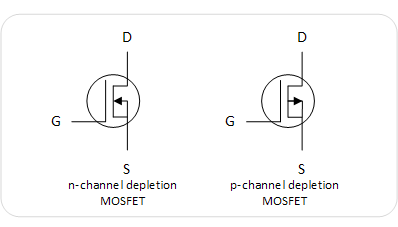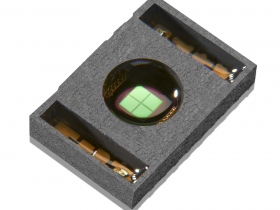In this article we will review the basic transistor types and their function. We will cover bipolar transistor, Junction FET, MOSFET and UJT transistor types. Feel free to comment with other transistor types you know.
Bipolar Transistor

Bipolar transistors are three terminal devices and act like electrically controlled switches of as current/voltage amplifiers. They come in two types either npn or pnp depending on their construction.
NPN Transistor
This type of transistor is normally off, but a small input current and a small positive voltage to its base B (relative to emitter – E) allows a large current to flow from collector to emitter, when collector is in higher voltage than emitter. Normally used in switching applications and amplifiers.
PNP Transistor
This type of transistor is normally off, but a small output current and a small negative voltage to its base B (relative to emitter – E) allows a large current to flow from emitter to collector, when emitter is in higher voltage than collector. Normally used in switching applications and amplifiers.
Junction FET

Junction field effect transistors are three terminal devices that are used as switches, amplifiers or voltage controlled resistors. Unlike bipolar transistors they don’t require a biasing current just a voltage to the gate to operate. Another difference with bipolar is that they are normally ON without any voltage to the gate.
n-channel JFET
This type of transistor in normally ON and a small negative voltage to it’s gate – G (related to source – S) stops the large current that flows from drain to source, when voltage of drain is greater than voltage on source. A unique feature is that they don’t need a current to it’s gate and are used in switching and amplifying applications.
p-channel JFET
This type of transistor in normally ON and a small positive voltage to it’s gate – G (related to source – S) stops the large current that flows from drain to source, when voltage of source is greater than voltage on drain. They also don’t need a current to it’s gate and are used in switching and amplifying applications.
Depletion MOSFET

Metal oxide semiconductor field effect transistors or MOSFETs is a popular type of transistors and when a small voltage is applied to its gate the current flow from Drain to Source is stopped. In contrast to JFETs, MOSFETs have larger input impedance and they draw virtually no current on their gate. There are two main type of depletion MOSFETs, n-channel and p-channel.
n-channel depletion MOSFET
N-channel depletion MOSFETs are normally ON, but a small negative voltage to the gate (related to source – S) stops the current flow from drain to source, when voltage on drain is greater than voltage on source. They need no current at all to the gate.
p-channel depletion MOSFET
P-channel depletion MOSFETs are normally ON, but a small positive voltage to the gate (related to source – S) stops the current flow from source to drain, when voltage on source is greater than voltage on drain. They need no current at all to the gate.
Enhancement MOSFET

n-channel enhancement MOSFET
N-channel enhancement MOSFETs are normally OFF, but a small positive voltage to the gate (related to source – S) allows current to flow from drain to source, when voltage on drain is greater than voltage on source. They need no current at all to the gate.
p-channel enhancement MOSFET
P-channel enhancement MOSFETs are normally OFF, but a small negative voltage to the gate (related to source – S) allows current to flow from source to drain, when voltage on source is greater than voltage on drain. They need no current at all to the gate.
Unijunction FET (UJT)

Unijunction transistors (UJTs) are three terminal devices that are used exclusively as switches and not as amplifiers. Normally a very small current flows from B2 to B1 but if a large positive voltage is applied to emitter – E (related to B1 or B2) increases the current flow, when voltage from B2 is greater than voltage on B1. The larger current from E combines with the smaller current from B2 to B1, thus giving a large current in B1. In this type of transistor the emitter current is the main source of current passing through B2-B1.





















